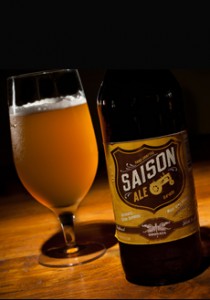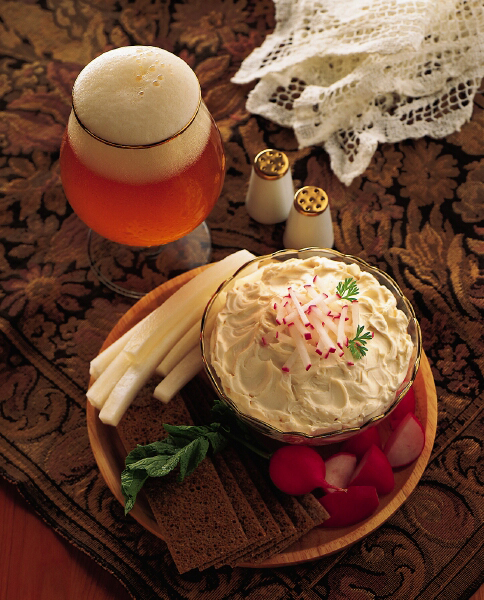TIP OF THE DAY: Saison (Farmhouse Ale) For Summer
 Saison, a refreshing summer ale. Photo courtesy BeerObsessed.com. |
We’ve written before on summer beers, brewed to be refreshing on a hot day: lighter in body with a moderate A.B.V. (alcohol by volume). Perhaps the most interesting of the lighter, hot weather styles is the saison (say-ZONE, meaning “season” in French). It is alternately referred to as farmhouse ale, since it originated on farmsteads in the Wallonia region of southern Belgium, a French-speaking region that shares a border with France. Saison was traditionally brewed by farmers at the end of winter, then set aside for the summer, where it was happily consumed by field workers. Yes, beer drinking on the job was common, because before the advent of quality-tested municipal water, it was safer than many water supplies. But that’s not your problem: You have a good municipal water supply. Instead, think about hosting a saison tasting party. |
|
|
SAISON: THE FREESTYLE ALE Often referred to as a dry, fruity Belgian ale, the interesting thing about saison is that no two taste the same. That’s because each farmer brewed it with whatever he or she* had on hand, so there was no common recipe. We can’t think of any other style of beer where this is true. (See our Beer Glossary for the different styles of beer.) The colors vary (golden, amber, orange, from light to dark); the aromas vary (citrusy/fruity, spicy). Perhaps what they have in common is their refreshing nature. Another feature we happen to love to find in saisons is a mild “barnyard” character. Famous in certain Burgundy wines, it comes from from Brettanomyces yeasts that naturally exist on the farm (and can be purchased by breweries). “Brett,” as it’s often called, contributes earthy, musty aromas and some tart flavor. |
||
|
IT’S PARTY TIME!
Check your local shelves for supplies of saisons. While the classic Belgian import is Saison Dupont (a fruity and spicy style), American craft brewers make hoppy, malty, spicy, fruity and floral. So, the real Tip Of The Day: Collect as many as you can find and invite friends for a saison tasting. Do it now, or make it your end-of-the-season Labor Day celebration. |
 Have a saison with crudités. Photo courtesy EatWisconsinCheese.com. |
|
|
THE DIFFERENCE BETWEEN BEER & ALE Although most of us use “beer” to refer to all suds, three parts of the brewing process actually define what is a beer—illustrated by the lager style—and what is an ale. Ales tend to be fruity-estery in aroma and flavor, while lagers are clean-tasting and crisp. These differences are created by: The Yeast |
||


